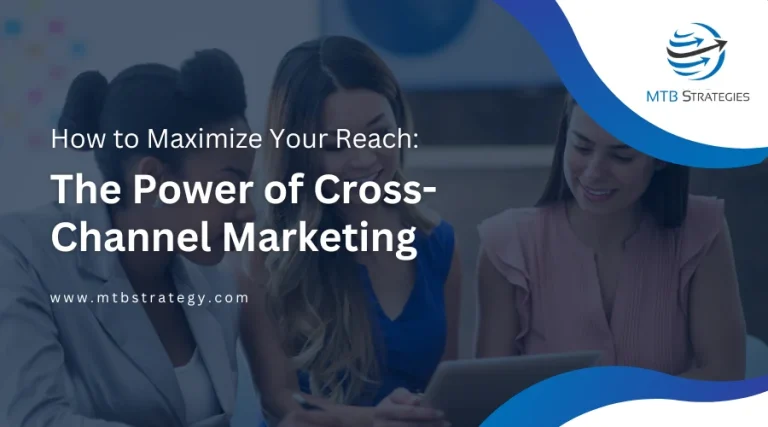Numerous buyer persona templates are available, making it challenging to find the one that best fits your company’s needs. The marketing department is unlikely to use a format you’ve selected because it contains unnecessary details.
Personas are an essential resource for any inbound marketing manager looking to reach their ideal customers at every stage of the buying process. They break down the thought processes of potential customers at each step of the buying process, allowing you to construct a more effective digital marketing strategy.
Content Requirements for a Buyer Persona Template
Create fictional characters to represent the various subsets of your target audience, or “buyer personas,” and fill them with data that will help shape your marketing approach.
To create each user persona, brands scour actual customer data and market research. The marketing team and you can use these avatars to create content that speaks directly to the persona’s values, goals, and pain points. They allow you to put yourself in the shoes of your target customer and adjust your sales pitch accordingly.
You should provide as much detail as possible in your buyer persona templates so they can be used effectively by marketing and sales. Your template’s ultimate purpose is to highlight customers’ decision-making process and their most frequent brand-related objections. Your company’s marketing personas may diverge significantly from those of competitors. Making up a persona is an exercise in personal expression, with no definitive right or wrong.
Most importantly, use the information you glean from your personas to improve your communication with your target market. Your marketing efforts should become less complicated, thanks to your personas.
Audience Segmentation & Its Benefits
In reality, most brands aim for several different types of consumers. You might advertise to teenage girls and boys if you run a clothing company. Alternatively, you may find that tween girls make up a sizable portion of your customer base.
A brand’s target audience can be broken down into one or more “personas” or representations of the ideal customer. Suppose a brand is aimed at teenage girls and boys, for instance. In that case, it may define its personas within each of these segments based on specific ages within the teen years, whether they live in an urban or rural area, their attitudes, lifestyles, etc.
Boost Your Efforts With Audience Segmentation
The ability to scale your targeting beyond individual personas makes audience segmentation essential. You might not be able to realistically set up your website to appeal to each persona separately.
You risk losing organic search traffic and rankings if you do that. Instead, you should divide your target audience into smaller subsets to market to each group of related personas more efficiently. Don’t forget that different personas could make similar purchases, so it’s helpful to group them.
Targeting specific subsets of your target audience is the key to scaling successfully. Next, you’ll use data like demographics, interests, and intentions to craft targeted messages. It frees you up to launch separate advertising campaigns that, whenever possible, are tailored specifically to your user personas.
Importance of Customer Personas in Your Content Strategy
Marketing strategies, such as which social media channels to use and what kind of messaging to employ, can be honed with the help of buyer personas.
Your company operates in the dark if you don’t have well-defined buyer personas. You’d be at a loss for how to market your product, what features and benefits customers care about, how to alleviate their problems, and how to make them feel about you.
As time went on, your audience lost faith in you. And it’s not easy to regain.
If you market to everyone the same way, your conversion rates will suffer even if your audience doesn’t immediately opt-out. Let’s pretend you run a store, and you decide to have a sale on men’s suits. The people who would be most enthusiastic about purchasing these suits miss the memo when the communication gets lost instead of being marketed directly to a specific persona.
Use a persona to target your content distribution to the right audience at the right time. More importantly, they help you learn about your target audience’s tastes, motivations, and obstacles to tailor your content accordingly. Having this information at your disposal will allow you to impress your recipient list consistently.
Let’s look at some real-world buyer personas to get ideas for creating our templates and improving our return on investment (ROI) in B2B content marketing.
Examples of Business-to-Business Buyer Personas
You can learn more about the concerns, motivations, and thought processes of your target customers’ key decision makers by creating business-to-business (B2B) personas. To help you improve your B2B lead generation, we’ve crafted some sample buyer personas at a high level.
SaaS Buyer Persona
Let’s pretend your company offers a service to automate and schedule content marketing.
Linda, the Director of Digital Marketing
- She can be either a Millennial or a Baby Boomer and reports directly to the Vice President of Marketing.
- Follows the news on Wall Street Journal, CNN, NPR, and a variety of marketing-related blogs
- Linda’s biggest annoyance is that her team hasn’t stepped up to the challenge of achieving larger scale in a more organized, efficient, and reliable manner.
Linda oversees an in-house digital marketing group assisted by external agencies. While she has no plans to use the software herself, she is sensitive to the requirements of her team and has observed that they have difficulty with things like automation, coordination, scheduling, scalability, and reporting. Although cost is not a concern for Linda, she is very interested in a solution that can be easily expanded.
To that end, she advocates for uniformity in equipment use across her team. This necessitates a solution adaptable enough to accommodate different requirements and user-friendly sufficient to facilitate a fast adoption rate.
HR Buyer Persona
William, the HR Manager
- He can be either a Millennial or a Baby Boomer and reports directly to the company CEO.
- Reads the HR Bartender and the HPPY blogs and reports directly to the CEO
- Workers’ reluctance to share their concerns with human resources is the most significant source of their frustration. That’s why there are so many unfavorable comments about the company on the review site Glassdoor.
William’s company spends millions of dollars annually to ensure its employees are satisfied. This includes generous benefits, free food and drinks, regularly team-building activities, and more. However, whenever he checks Glassdoor, he sees nothing but negative comments. Reputation is damaged due to criticism directed at the company’s strategy, CEO, and regular operations.
William has attempted to foster an atmosphere of openness in HR so that employees will feel safe coming to him with concerns and suggestions before they resort to posting them on Glassdoor, but to no avail. He needs a method for his team to quickly and easily collect feedback and compile it into actionable insights. Which is to say, William requires a more responsive way of monitoring the morale of his workforce. While William acknowledges the importance of maintaining the anonymity of respondents, he would still like to know which teams are more dissatisfied than others.
William would like HR to survey all staff every two weeks. It’s important to him that staff members can quickly and anonymously provide feedback from their phones (preferably in under two minutes). William needs to meet some key performance indicators. However, he genuinely cares about the happiness of his company’s staff members.
Examples of Business-to-Customer Buyer Personas
To engage and help you connect with your audience more effectively, we will review some examples of B2C buyer personas below.
eCommerce Buyer Persona
You could use a persona like this if your company sells backpacking gear or other outdoor wear.
Michael, Outdoor Explorer
- Male, Gen Z
- He likes blogs, outdoor magazines, and social media about the outdoors.
- His biggest pet peeve is equipment that breaks too quickly or doesn’t do the job correctly. When it comes to the hiking equipment he uses, Michael has no problem spending a bit more for better quality.
The only thing Michael dislikes more than being outside is playing sports.
He takes his time in the great outdoors.
Despite being on a tight budget, Michael still purchases high-quality, long-lasting hiking equipment. Reviews, influencers, and blogs provide him objective information about the best gear for the trails he enjoys.
Michael is loyal to a select few brands but is open to trying something new if it comes highly recommended. Michael is on the prowl for a replacement pair of hiking boots. The shoes were durable, but he didn’t like them enough to buy another pair. Having gained wisdom and experience, he now demands the finest quality within his means.
Car Insurance Buyer Persona
Kylie, the Average Driver
- Female Millennial
- Gets info from Consumer Reports and NerdWallet
- Kylie’s biggest pet peeve is “Gotcha” clauses hidden in fine print after you fall for the clever marketing. She has confidence in her driving skills and is looking for a reliable brand.
Kylie regularly puts her car through its paces, commuting to and from work and making occasional cross-town trips for things like socializing and grocery shopping. In her fifteen years as a licensed driver, Kylie has only been in one minor car accident and received two speeding tickets.
Kylie is like the average person; she doesn’t enjoy looking for auto insurance. She is just looking for a reasonable rate from a reliable business that won’t ignore her when she calls. Kylie would not purchase insurance from a company she had never heard of, regardless of how affordable their policies were. She researches insurance companies before deciding on a policy, including asking for recommendations from friends and coworkers.
Kylie also places a premium on honesty. You will lose her forever if you charge her for something she wasn’t expecting or if you don’t make the terms and conditions clear.
Conclusion
Please look at how these hypothetical customers interact with your brand at each stage of their journey after you’ve used the above ideas to generate your buyer persona examples. Where and when did they first see you? Precisely what are their assumptions? How often do customers interact with your company before finding a solution to their problem?
Creating an exceptional digital customer experience that attracts new visitors and grows your audience starts here. Send us a message if you get stuck or need some direction.





